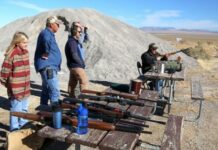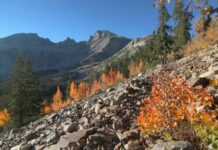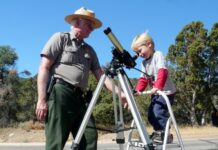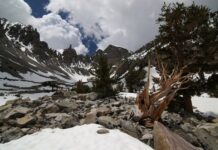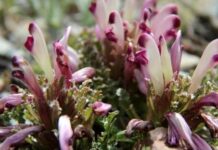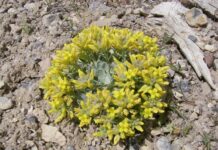Nevada’s Last Glacier
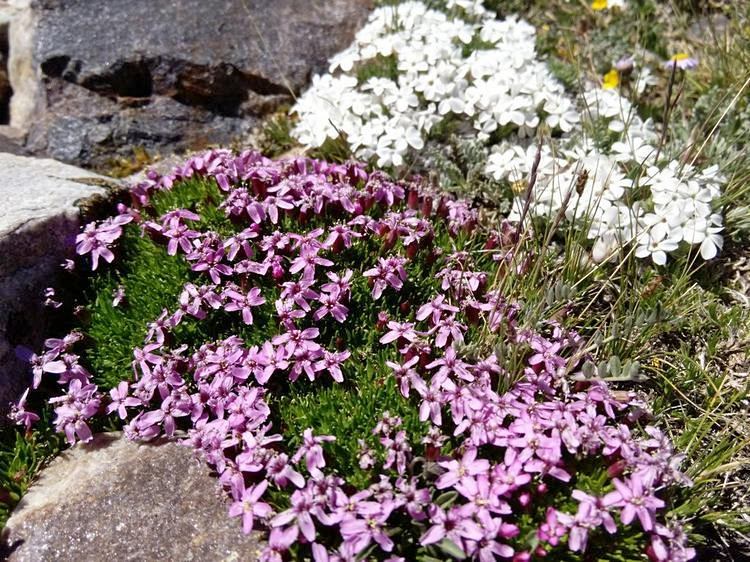
July is one of the busiest months in Baker, with hotel rooms, cave tours, and developed campgrounds at capacity. You can still enjoy your visit by booking ahead (for lodging options and cave tours) and checking out 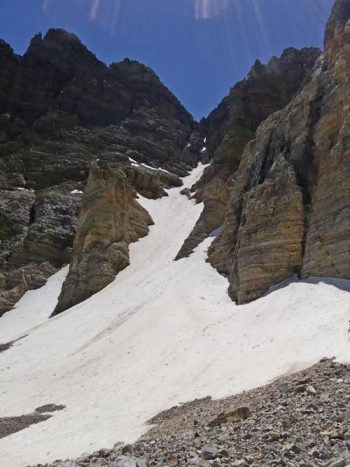 more primitive campsites (e.g., Snake Creek area and Sacramento Pass recreational area). And there is lots of great backcountry, with over 100 miles of trails in the North and South Snake Ranges. For nformation on lodgings, restaurants, bars, and stores in and near Baker, click here. For cave tours information, click here.
more primitive campsites (e.g., Snake Creek area and Sacramento Pass recreational area). And there is lots of great backcountry, with over 100 miles of trails in the North and South Snake Ranges. For nformation on lodgings, restaurants, bars, and stores in and near Baker, click here. For cave tours information, click here.
It gets hot in town, at an elevation of 5,300 feet, so to cool off simply head up the mountain. The paved Wheeler Peak Scenic Drive reaches over 10,000 feet elevation, and you’ll notice very different vegetation as you gain elevation and the air temperature drops dramatically. July is a good time to head up to see the ancient bristlecones, which have a very short growing period each year.
If you want to continue further into Wheeler Peak cirque, follow the sign towards the glacier. You’ll find a long rock glacier, which is basically rock-covered ice. The rocks have fallen off the surrounding mountainsides and help insulate the ice so it lasts longer. Nevertheless, scientific tests show that there’s ice underlying the rocks only at the top of the rock glacier, but not in the lowest lobes.
Part of the glacier that carved this cirque and flowed down to about 8,000 feet elevation is still left, the only glacier remaining in Nevada. Now it is very small. In July it is still snow-covered. 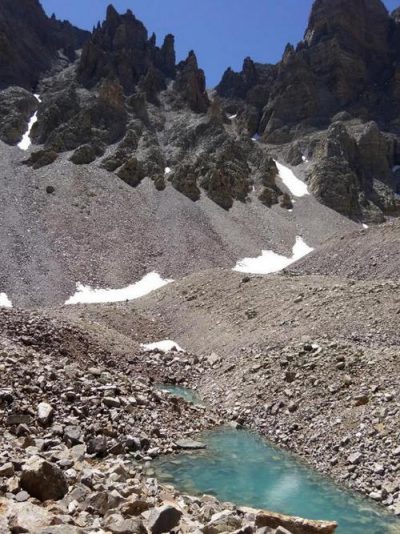 Often, the snow melts so that the ice and crevasse are visible in September and October. This isn’t really a good thing, because for a glacier to grow, more snow must be deposited and squashed to ice than melts or sublimates. This little glacier probably doesn’t have a long life expectancy.
Often, the snow melts so that the ice and crevasse are visible in September and October. This isn’t really a good thing, because for a glacier to grow, more snow must be deposited and squashed to ice than melts or sublimates. This little glacier probably doesn’t have a long life expectancy.
Use caution when hiking in the area. Footing is over loose talus that often moves, and if you spend any time in the cirque, you are likely to hear rocks falling from Wheeler Peak or Jeff Davis Peak, over 1,000 feet above. It’s a neat experience to visit this area, though, as it feels like you’re going back in time. Check out the beautiful wildflowers at the higher elevations, too.
If you’d like to learn more about the lichens throughout Great Basin National Park, you can join the Lichen BioBlitz July 17-19. This is a citizen-science event, with lichen experts coming to lead workshops and hikes to various locations. At present, 160 species are known in the park, and many more are expected to be found during this short-term event. For more information, check out the park’s BioBlitz webpage.
— Gretchen Baker
Visit Gretchen’s fascinating outdoor adventure blog, Desert Survivor.



